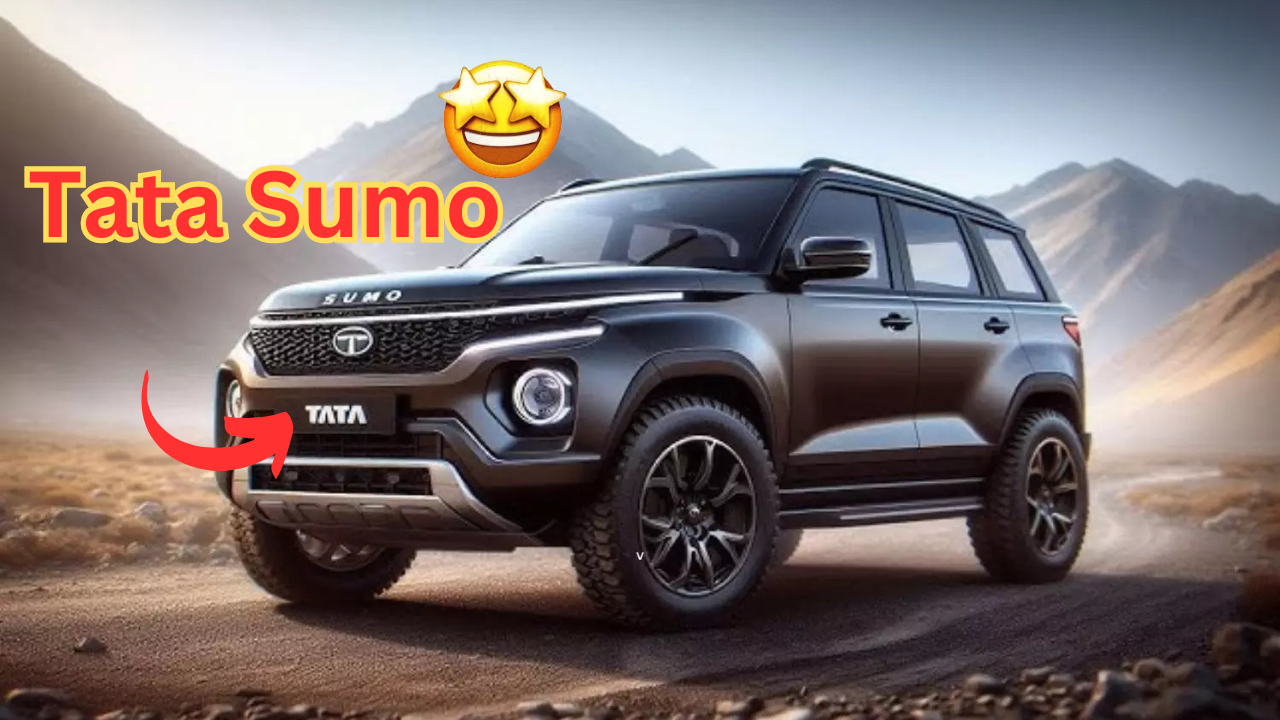Introduction
Tata Motors, one of India’s leading automobile manufacturers, has a rich legacy of producing robust and reliable vehicles. Among its extensive lineup, the Tata Sumo and Tata Nexon are two iconic models catering to different segments. The Tata Sumo, once a favorite among fleet operators and large families, has recently made a comeback with a new luxury look. However, this revamped Sumo has sparked discussions on whether it will impact the market dominance of the Tata Nexon, one of the country’s top-selling compact SUVs.
Tata Sumo: A Brief History
Launched in 1994, the Tata Sumo was one of India’s first multi-utility vehicles (MUVs). Designed for both commercial and personal use, it became popular due to its spacious design, strong build, and affordability. Over the years, Tata introduced multiple iterations of the Sumo, including the Sumo Gold and Sumo Grande, but the model was eventually discontinued due to evolving market demands and stricter emission norms.
The New Tata Sumo: A Luxury Transformation
The latest iteration of the Tata Sumo has been reintroduced with a luxury appeal. Some of its highlighted features include:
- Premium Exterior Design: A modernized body structure with sleek lines, LED lighting, and bold aesthetics.
- Upscale Interiors: Leather seats, digital dashboard, and enhanced comfort features.
- Advanced Technology: Infotainment systems with Android Auto and Apple CarPlay, voice commands, and enhanced connectivity.
- Powerful Performance: A robust diesel engine with improved mileage and BS6 compliance.
- Safety Upgrades: Multiple airbags, ABS with EBD, traction control, and advanced braking technology.
While these enhancements position the Tata Sumo as a luxurious family SUV, its impact on the Tata Nexon is a subject of debate.
Tata Nexon: India’s Compact SUV Leader
The Tata Nexon has consistently ranked among the best-selling compact SUVs in India since its launch in 2017. It is known for its:
- Five-Star Safety Rating: A Global NCAP rating of 5 stars, making it one of the safest cars in its segment.
- Stylish Design: A sleek, sporty look that appeals to young buyers.
- Fuel Efficiency: Multiple engine options, including petrol, diesel, and electric powertrains.
- Tech-Savvy Features: A digital instrument cluster, touchscreen infotainment, and connected car features.
- Competitive Pricing: Positioned as a value-for-money offering with a well-balanced price-to-feature ratio.
Can Tata Sumo Outsell Tata Nexon?
Despite its luxurious upgrades, the new Tata Sumo faces significant challenges in outperforming the Tata Nexon. Some key factors include:
1. Market Segmentation
The Nexon and the Sumo cater to different audiences. The Nexon targets urban buyers, young professionals, and families looking for a stylish, fuel-efficient, and tech-loaded compact SUV. In contrast, the new Sumo appeals to large families, fleet operators, and rural customers who need a spacious vehicle.
2. Pricing Strategy
The Tata Nexon, with its multiple variants, offers affordability to a broad range of buyers. If the new Tata Sumo is priced higher due to its luxury features, it may struggle to attract cost-conscious customers.
3. Competition in the SUV Segment
The compact SUV segment is highly competitive, with models like Hyundai Venue, Maruti Brezza, Kia Sonet, and Mahindra XUV300 challenging the Nexon. The new Tata Sumo must differentiate itself while ensuring it doesn’t cannibalize Tata Motors’ existing SUV sales.
4. Consumer Preferences
Modern car buyers prioritize safety, technology, and fuel efficiency. The Nexon already fulfills these demands, whereas the new Tata Sumo needs to prove itself in these aspects.
5. Brand Positioning
Tata Motors has heavily marketed the Nexon as a stylish, youthful, and safe vehicle. Repositioning the Sumo as a luxury vehicle may require significant investment in branding and customer awareness.
Conclusion: Will the Sumo Impact Nexon Sales?
While the Tata Sumo’s new luxury makeover is an exciting development, it is unlikely to disrupt Tata Nexon’s market significantly. The Nexon has established itself as a reliable, modern, and fuel-efficient SUV with mass appeal. On the other hand, the Sumo will likely cater to a niche audience looking for a larger, more traditional SUV.
Tata Motors’ strategy will determine the fate of these two models. If the company ensures that the new Tata Sumo complements rather than competes with the Nexon, it can expand its market share without cannibalizing existing sales. Ultimately, the success of both vehicles will depend on how well Tata positions them in an evolving Indian automobile market.
Final Thoughts
The return of the Tata Sumo in a luxury avatar is an interesting move, but Tata Nexon’s established reputation, safety features, and compact SUV charm make it hard to displace. Instead of direct competition, Tata Motors may find a way to balance both models in its lineup, ensuring success in different market segments.













